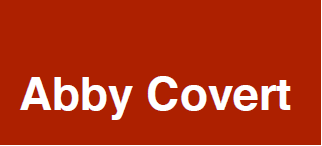The Doldrums between Why and What
Once I have my intention set and more specific goals I want to reach with my work: then what? There are seemingly endless executions that can be derived from a single purpose. Where should I even start? So creeps in another opportunity for smart people to get in their own way. I am learning that it takes a tremendous amount of work and courage to get from why to what.
More so, I am learning that having clarity of intent and goals can add to the level of anxiety that is faced by the do-er. Because admitting where you are and how far you have to go is hard. The worry is that said anxiety can feel like fuel for some and molasses for others. I have students in each camp at this point.
For homework this week I asked my SVA POD students each to make something to help them explain their work in an elevator. Call it my twist on the elevator pitch. I wanted them to revisit explaining what it is that they are doing in the remaining 11 weeks and why. I wanted them to get out of the studio and experience the awkwardness of talking to people that they don’t spend endless time with.
I spent an hour riding up and down on the elevator with various students and their pitch projects. The rules were simple: we start at 7 and go down to 1, then back up. In that time, they have to tell me about their thesis using whatever they made. If anyone else calls the elevator in that time, they were told to keep going. It turns out we had a very full elevator for many of their pitches and so the awkwardness I was looking for was achieved.
During the rides with the students we learned a few lessons that I feel are worth capturing here for reference as we move from understanding our why to formalizing our whats:
Lessons from the elevator
Use small(er) words: Strangers, even those in an graduate school elevator, don’t want to be pummeled with academic jargon or buzz words or be asked to remember more then a few new words or concepts. I told one student after her run that she should work next on a version that is meant for an elevator full of kindergarten kids. Grade level matters, and while I am not suggesting her book be written for that demographic, I do suggest that each student work on their conversational ability to discuss their work with whomever they might encounter.
We understand things relative to what we already know: Use the power of rhetorical questions, analogies and comparative mental models when trying to educate someone quickly on a really complex topic. Ask people questions and build from there.
Establish Interest before Action: Everyone with an advertising background would be able to give them this advice but it wasn’t till I reflected on the experience that it occurred to me that what many of them is lacking in their pitch, is interest. They dive into the action part. They assume the person will care before spending the extra 15 seconds making them care.
Use their words: Once someone is engaged with what it is you are talking about, engage them using words they have given you in the conversation. For example: If they say the word people, where you said human, change to people. One of my students is working on a project about ambient energy harvesting and he learned in his 3 min elevator ride that some people know none of those words, especially not in context to their own personal behaviors. But he was able to play back their words and get them to come along to the understanding side with a few rounds of clarification. One of the girls we encountered put it plainly: It is like using your movements to make power you can use for like your phone? Exactly.
I’m between Why and What too: During this hour I also had the opportunity to test my elevator object, a tiny book I made with the intent of educating someone on the role of information architecture. What I learned is that I still don’t have the exact right small enough words for conveying to someone completely green the concept of IA, but also that I have a mountain of misconceptions to fight on this path as well for those who know the term and don’t understand it.
Thanks for reading, my deck from this week on Communicating Why, What and How is available for download.
